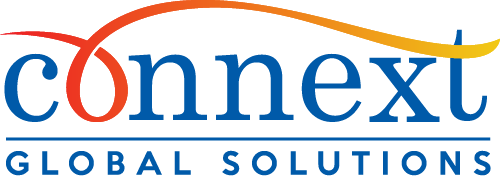Attrition analysis & the psychology of disengagement

Without a doubt, my most perplexing and profound observation from years of leading large organizations is a behavioral complex I refer to as the psychology of disengagement. In the back office BPO and contact center business, competition for labor is heavy and aggressive. The work can be repetitive, mundane, offering considerable risk to workforce stability. Workers, increasingly millennials, have a lot of choices to go along with their impatience and innate need for challenge and social expression. With their 1980’s + vintage years, the modern workforce is vocal and self-assured so it is not hard to figure out if or when they are dissatisfied with their employers. And even if you missed the earlier signs, the dark computer screens and empty cubicles can be quite convincing.
Labor attrition, being the effect, is the result of basic employee needs and expectations not being met. The psychology of disengagement acknowledges that people simply leave under these circumstances, but more importantly, that people leave before they leave. In other words, their contribution progressively declines like slowly vanishing silhouettes occupying seats. In fact, the probability exists that a significant portion of your workforce is surfing job site postings and mauling over employment leads received via text and social media –at this very moment. We have to pay attention to more than KPI and financial results if we hope to achieve our planned performance targets. Labor stability, in Six Sigma terms, is “critical to quality.” It is very likely that our financial plan was based on the assumption of a fully engaged workforce. Colleagues and friends, take some advice from an old war horse, this is the job. Focus on hiring and retaining good people. Everything else will fall in line.
Employee attrition can be costly or even devastating to businesses of any size in both, financial and less tangible ways. I like the quote by former Xerox CEO, Anne M. Mulcahy, “Employees who believe that management is concerned about them as a whole person – not just an employee – are more productive, more satisfied, more fulfilled. Satisfied employees mean satisfied customers, which leads to profitability.”
It is therefore vital that attrition be subjected to extensive and continual observation, measurement, and analysis. While many companies do this, they may stop at the straightforward and perhaps simplistic measurements of turnover which include the percentage of attrition to total headcount by month, and cumulatively on an annual basis (the months added together). This is certainly a helpful measure of butts in seats, but falls short of providing advanced indicators or an understanding of what employee attrition is costing in financial terms, competitive positioning or customer satisfaction.
Importance of measurement
The ability to measure turnover can give business leaders the information needed to reduce its negative effects, while shedding light on what can be done to address the underlying causes. Thorough analysis that encompasses the impact of attrition on finances, productivity, efficiency and your brand image over time will allow you to develop strategies to mitigate the concluded risks, while potentially providing clues as to the reasons behind them.

Average tenure compared to turnover rate
Measure the average length of time that employees remain with your company to spot internal and external risk factors. For example: If a large percentage of your employees stay for years, but your monthly attrition rate is still high, you may want to look at recruiting and on-boarding and how it may have changed over time. Other time-inspired factors may also be in play which could include changes in labor market conditions, local leadership issues, the recent cancellation of the company picnic, etc. The opposite holds true as well; If your average tenure is low and a large number of employees leave the company within months or even weeks, the drivers are likely entrenched in your on-boarding process or management practices and not influenced by time, one way or the other.
To calculate the average, add the total length of time each employee has been with your company. Divide the sum by the number of employees used in the calculation. Consider how long your business has been open when analyzing the result. Newer companies will naturally have shorter average lengths of employment, while more established companies should see longer average lengths.
Base versus backfill attrition
Your base headcount might be the number of employees on your roster when the year begins. This would be compared to attrition from this roster throughout the year. You can then add your backfill, as well as attrition from backfill. In other words, at the end of the year, I have 80 of the original 100 on my roster so 20% base attrition. My annual cumulative attrition rate was 80% so by backfill turned over 3 times (4 times including the original backfill). Also, since program launches and/or expansions during the year may not be included in the starting roster you should exclude any added headcount or attrition directly associated with them.
This view is helpful when trying to validate your investment in employee training, for example. The higher your base retention, the more sensible the investment or, at least, that’s the theory.
Average tenure or length of employment
Measure the average length of time that employees remain with your company. This will help you in financial planning as pertains to recruiting and training expense, salary increases, and facility initiatives. To calculate the average tenure, add the total lengths of time each employee has been with your company. Divide the sum by the number of employees used in the calculation.
Performance and production regression
Calculate the ratio of new hires to your total number of employees at a specific point in time to get a clearer picture of how much of your workforce is made up of newcomers. A higher ratio of new employees can be a sign that your turnover is unusually high, unless you have recently started your business or expanded your workforce. It is often a sign of lower quality based on a lack of experience.
To calculate this ratio, divide the number of new hires currently employed by the current total number of employees. The result is the percentage of new hires compared to the total workforce, including the new employees.
Cost of turnover and break-even analysis
Hiring and training new employees incurs direct and indirect costs. Your cost-per-hire includes the costs of advertising available positions, performing background checks, paying out referral bonuses and other costs incurred simply to inform job seekers of your available positions. Internal costs include management’s time spent reviewing resumes, making calls and conducting interviews, as well as the time spent by dedicated recruiting staff and the HR department. Other related costs could include paying temporary workers and the opportunity costs associated with lost productivity, sales, billable hours, etc. Add to this the costs of training new employees once they arrive, and you will get a picture of just how much it costs to lose and replace an employee.
If you would prefer – as we do – to not spend your time dutifully conducting attrition analysis, consider an equal or greater time investment in initiatives that effectively drive workforce stability. Listen to your employees and challenge yourself to have an increasingly high yes ratio when considering their requests. Their disengagement declines as your engagement grows.







 Independent
Independent




